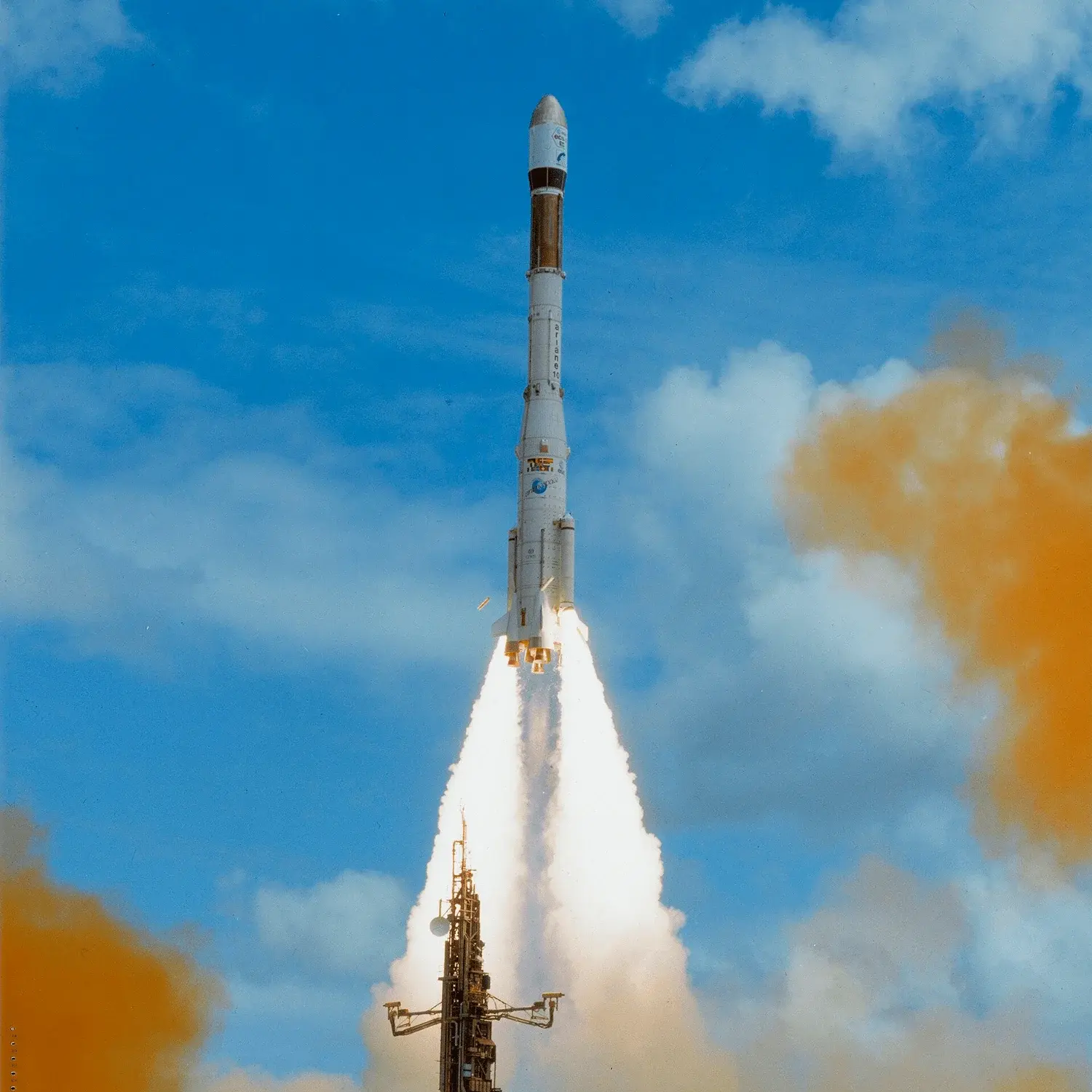Arabsat-1A, Brasilsat-A1
Launch Success
Liftoff Time (GMT)
23:22:00
Friday February 8, 1985
Mission Details
Launch Notes
Flight V12.
Arabsat-1A
Arabsat-1A was a Saudi Arabian communications satellite that was operated by Arabsat. It was used to provide communication services to the Arab States. It was constructed by Aérospatiale, based on the Spacebus 100 satellite bus, and carries two NATO E/F-band (IEEE S-band) and 25 NATO G/H-Band (IEEE C band) transponders. At launch, it had a mass of 1,170 kilograms (2,580 lb), and an expected operational lifespan of seven years. Immediately after launch, one of its solar panels failed to deploy, resulting in reduced performance. It was placed into a geosynchronous orbit at a longitude of 19° East. Following a series of gyroscope malfunctions, it was retired from active service and remained operational as a backup. In September 1991, another problem developed with the spacecraft's attitude control system, and it began to drift eastward. It failed completely in March 1992.
Geostationary Transfer Orbit
1 Payload
1,170 kilograms
Brasilsat-A1
Brasilsat A1 was a Brazilian communications satellite that was operated by Embratel. It was constructed by Spar Aerospace and is based on the HS-376 satellite bus. The Brasilsat A1 was off duty in March 2002 and was transferred to the graveyard orbit. The satellite had the shape of a cylinder, where at its top was located a directional antenna that opened after the launching of the satellite. The satellite had a mass in orbit of 671 kg, had a rotation stabilized between 50 and 55 rpm, its propellers used as a propellant 136 kg of hydrazine, and was powered by solar cells that supplied 982 Watts at the beginning of its phase of operation, using two NiCd batteries as power reserve. It carried 24 C-band transmitters with 6 spare transmitters. They provided an Effective Incident Radiated Power (EIRP) effective incident radiation power of 34 dBW for most of the Brazilian territory.
Geostationary Transfer Orbit
1 Payload
1,195 kilograms
Launch Site
Stats
Ariane 3
3rd
Mission
1st
Mission of 1985
European Space Agency
4th
Mission
1st
Mission of 1985
1985
15th
Orbital launch attempt

